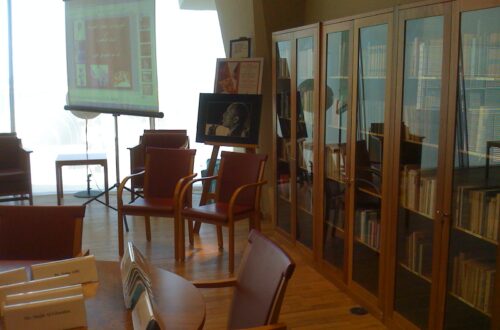What is the impact?
Aaron Cohen Associates, LTD prioritizes library user needs. We research how the design and layout of physical library spaces can impact and support the learning process. Our library consultant has experience at the intersection of architecture, education, and instructional design.
PROJECT UPDATE:
The Boston Consulting Group did an impact study on the SNFCC / National Library of Greece (2022). It clearly shows that the library project has a positive impact on Greece’s image & its people. The National Library of Greece (NLG) has been a landmark of inclusion, providing free access for those of all backgrounds, and those with special needs. Their daily operations and activities have made deep impact on the rich offering of Greece’s cultural and educational legacy, removing cultural barriers and preserving Greece’s educational heritage.
Engagements
50 years ago, Aaron Cohen AIA gained experience in the design and layout of educational spaces, federal research facilities and public libraries. Indeed, he made a significant impact on how people use libraries and interact with their environment. Today, we focus on how the physical and digital environment. The physical library environment can be used to foster collaboration, creativity, and engagement with the community. Our library planning also includes collections, technology and the integration of digital tools in the physical space. Our library programs to support learning and collaboration improvements.
User Engagement
Our consultant and library team has evaluated the needs and preferences of all different types of library users. We work with your community and identify the context for the project. We provide library planning workshops to learn about the user needs. We ask what type of library do they need and what are the most important priorities for the community. It is an engaging format that enables us to uncover the strategies that will make the most impact on the community.
Profiling the User
Today’s students, often referred to as the “Net Generation” or “digital natives,” have grown up with technology and have a natural inclination towards using it in a collaborative and social way. Many universities have recognized this and have adapted their curriculum to include courses that focus on the use of technology for research, collaboration, and presentation of information, often through group projects. This trend is a reflection of the increasing importance of digital literacy and the ability to effectively use technology in the modern workforce.
Group Priority
Group space has distinct physical designs that are tailored to the specific social context and user preferences of the area in which they are located. For example, one collaborative area may be located in a public area and designed for large groups to collaborate on projects, while another may be located in a more private area and designed for smaller groups or individual study. Most importantly, the collaborative space is a priority for most libraries. We help program and plan strategies for managing noise levels in areas designated for group and collaborative work.
Interactive Space
Interactive group workspaces typically consist of physical spaces that are designed for collaborative work. These spaces typically include one or more large computer displays, custom furnishings, and nearby whiteboards for two to six people working together. For a recent project, we explored large computer displays. We analyzed how they can be used to share information and collaborate on projects.
Collaboration Functions
Think about the types of features on Zoom. These functions are available to facilitate collaboration and communication among users in a group workspace. We need more spaces in the library for users to share information, work together on projects, and keep track of their progress. The following are a few functions that group rooms and collaboration spaces require.
Screencast to a shared display: This is a collaborative activity where users can take turns or share control of the large public display(s).
Share files or web pages: Users can drag selected files or URLs to share with the group. They can choose to share with one or all, including the host screen driving the shared display.
Copy and paste to the shared display: Users can copy and paste text or images from within an application onto the shared display.
Annotate work in the shared display space: Users can mark up the public display, similar to a whiteboard, using colored electronic pens. The screen is savable and exportable to a file.
Coffee, Water, Flexible: Space that allows people to be social and collaborative.






